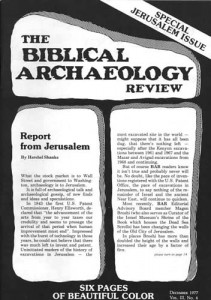When Was the Exodus?
To the Editor:
Professor Siegfried H. Horn’s article in the June 1977 BAR (“What We Don’t Know About Moses and the Exodus,” BAR 03:02) exhumes once again, the weakly supported and generally discarded theory of the Exodus having taken place during the 18th Dynasty reign of Thutmose III. Dr. Horn’s major premise would seem to be based more on romantic conjecture than on the evidence.
Dr. Horn does not refer, at all, to Exodus 1:11, which mentions the building “for Pharaoh store cities, Pithom and Ramses”. Archaeologists generally agree that the “Ramses” mentioned in the text refers to Ramses II’s new capital of Per-Ramses, which he erected on the ancient site of the Hyksos capitol of Avaris, and that the Biblical Pithom is quite probably a city of Pe(r)-Atum (the House of Atum), which is quite possibly Tell el-Maskhutah in Wadi Atum, the actual location of Goshen. Based on this evidence, Dr. John Bright, in his History of Israel (second edition, Westminster Press), hypothesizes that “it is plausible that Sethos the First, who initiated that restoration of Avaris was the Pharaoh who began the oppression of Israel and that Ramses II was the Pharaoh in whose reign the Exodus took place.”
Already a library member? Log in here.
Institution user? Log in with your IP address.

